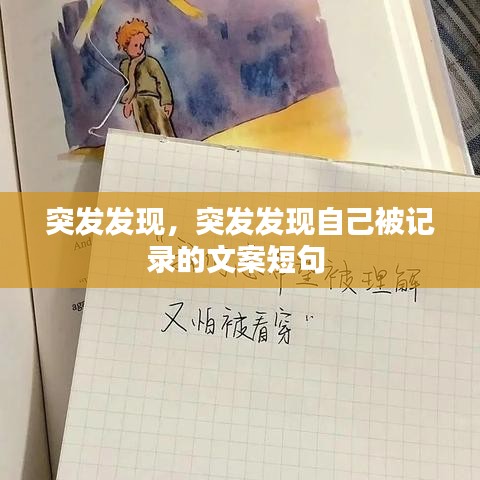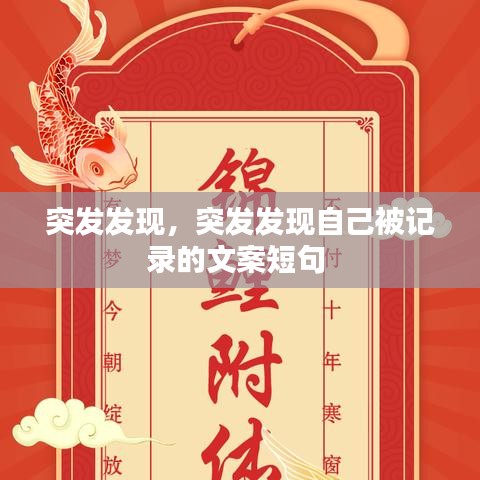<!DOCTYPE html>
Uncovering a Surprise DiscoveryIntroduction to the Discovery
In the vast expanse of human history, there have been countless moments of wonder and discovery. Yet, sometimes the most extraordinary finds are those that come as a complete surprise. This article recounts the story of one such unexpected discovery that has left scholars, historians, and enthusiasts in awe.
The Unexpected Revelation
It was a routine archaeological dig in the heart of an ancient city that led to an unprecedented revelation. The team had been meticulously excavating layers of the city's past, layer by layer, hoping to uncover artifacts from the medieval era. Little did they know that their next find would rewrite history and challenge their understanding of the past.
As they reached a particular depth, they stumbled upon a hidden chamber. The entrance was barely visible, concealed behind a thick layer of debris. The excitement was palpable as the team carefully cleared the entrance, revealing a door made of an unusual, dark wood.
With great anticipation, they opened the door to find themselves in a room that seemed to defy time. The walls were adorned with intricate carvings, depicting scenes from a civilization long thought to have vanished without a trace. The air was thick with the scent of old wood and an ancient, unidentifiable substance that seemed to preserve the room in a state of eternal preservation.
The Artifacts Unveiled
Inside the chamber, the team discovered a trove of artifacts that had been preserved for centuries. Among them were pottery shards, metal utensils, and a series of scrolls that, upon examination, turned out to be a collection of historical texts. These texts detailed the existence of a previously unknown civilization that had thrived for centuries, only to be swallowed by the sands of time.
The scrolls described the culture, religion, and daily life of this forgotten people. They spoke of advanced technologies and architectural marvels that had long been assumed to be the sole achievements of other, more well-known civilizations. The discovery was not just a treasure trove of historical information; it was a puzzle that promised to reshape our understanding of the past.
Among the most remarkable finds were a set of architectural blueprints for a colossal structure that had been mentioned in the scrolls but never found in any other historical records. The team's excitement grew as they realized that the structure might still exist, hidden beneath the earth's surface.
The Race to Preserve the Find
The discovery was announced to the world with great fanfare, but it also brought with it a sense of urgency. The scrolls and artifacts were delicate, and any exposure to air or moisture could result in their irreversible deterioration. A race to preserve the find began, involving experts from various fields, including archaeologists, historians, and conservationists.
Teams were dispatched to the site of the potential colossal structure, employing cutting-edge technology to map and document the area without causing damage. Meanwhile, the scrolls were carefully cleaned and restored, a process that required precision and patience. The world watched with bated breath as the discovery was slowly but meticulously brought to light.
After months of intense effort, the colossal structure was uncovered. It was a testament to the architectural prowess of the long-lost civilization, and its preservation became a priority. The structure, now known as the "Lost Temple," became a symbol of human ingenuity and a reminder of the vastness of our history.
The Impact of the Discovery
The discovery of the lost civilization and its architectural marvel had a profound impact on the world. It challenged the traditional narratives of history and opened new avenues for research. Historians and scholars began to reassess their understanding of various periods, searching for connections and similarities with the newfound civilization.
The discovery also had a ripple effect on the broader cultural landscape. Museums and universities around the world sought to acquire replicas of the artifacts and scrolls, making them accessible to the public. Educational programs were developed to teach students about the importance of historical discovery and the ongoing quest for knowledge.
Furthermore, the discovery sparked an international collaboration between archaeologists, historians, and other experts. This collaboration led to the establishment of research centers dedicated to studying ancient civilizations, ensuring that future discoveries would be made with the same level of care and respect for history.
转载请注明来自深圳市鹏腾电子发展有限公司,本文标题:《突发发现,突发发现自己被记录的文案短句 》














 粤ICP备19130523号-1
粤ICP备19130523号-1
还没有评论,来说两句吧...